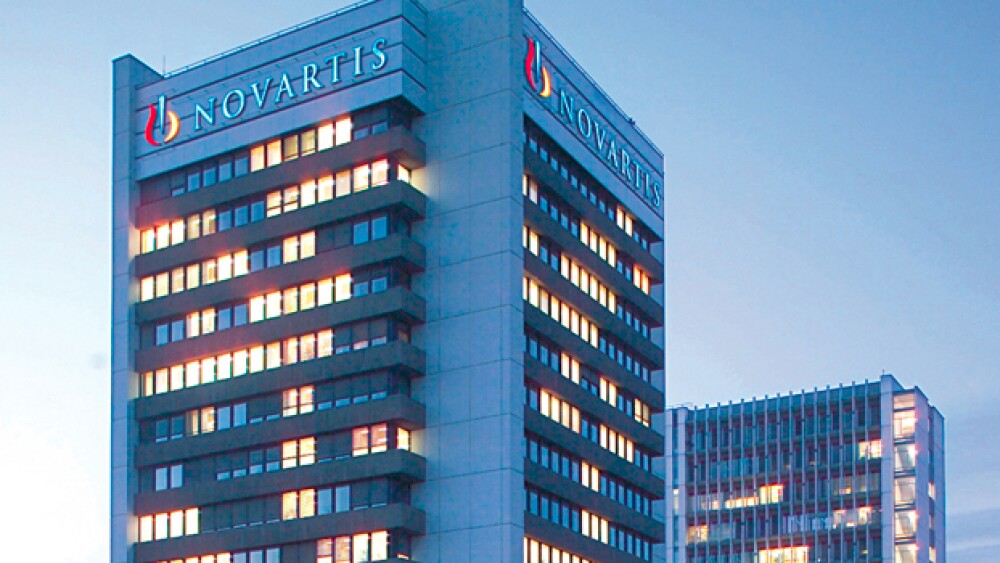With fresh two-year data in hand, Novartis remains focused on seeking regulatory approval for brolucizumab, an ophthalmology drug for the treatment of neo-vascular age related macular degeneration..
With fresh two-year data in hand, Novartis remains focused on seeking regulatory approval for brolucizumab, an ophthalmology drug for the treatment of neovascular age-related macular degeneration (nAMD). Novartis plans to submit the drug for approval in December.
If approved by the U.S. Food and Drug Administration (FDA), Novartis will look to carve out a significant chunk of market share from Regeneron and its blockbuster drug, Eylea. Over the weekend, Novartis announced additional Phase III two-year results from a brolucizumab Phase III study that the company said reaffirmed its positive one-year findings in nAMD patients. Approximately 20 to 25 million people are affected by nAMD, also known as wet AMD, a leading cause of blindness worldwide.
Brolucizumab is a humanized single-chain antibody fragment (scFv) designed to inhibit vascular endothelial growth factor (VEGF).
In the two-year HAWK and HARRIER study, brolucizumab met its primary endpoint of non-inferiority versus Eylea (aflibercept) in best-corrected visual acuity. Additionally, Novartis said brolucizumab exhibited superiority in key retinal outcomes at 48 weeks. The two-year data showed that brolucizumab continued to exhibit superiority at 96 weeks in the reduction of retinal fluid, an important marker in nAMD disease activity, Novartis said. The HAWK and HARRIER study findings demonstrated that fewer patients with nAMD who were treated with brolucizumab had intra-retinal fluid (IRF) and/or sub-retinal fluid than those patients who were treated with Eylea at 96 weeks.
Novartis also said that patients treated with brolucizumab 6 mg continued to demonstrate reductions in central subfield thickness at 96 weeks. An increase in CST in nAMD is an important measure of abnormal fluid accumulation and edema and may result in reduced vision, the company noted. Additionally, of the patients on brolucizumab 6 mg who successfully completed year one on a 12-week dosing interval, 82 percent in HAWK and 75 percent in HARRIER were maintained on a 12-week dosing interval in year two. These data were presented at the American Academy of Ophthalmology 2018 Annual Meeting this weekend.
Shreeram Aradhye, Novartis Pharmaceuticals’ chief medical officer, said the two-year data shows that brolucizumab consistently dried retinal fluid better than Eylea. Additionally, the “robust visual gains” that were seen with brolucizumab in year-one data, were able to be maintained through the second year.
“With sustained improvements in key anatomical outcomes that denote disease activity, brolucizumab is an important scientific advance and underscores our commitment to reimagining medicine,” Aradhye said in a statement.
Pravin U. Dugel, the principal investigator for the HAWK and HARRIER trials, added that the two-year findings regarding retinal fluid reduction are key goals for the treatment of nAMD.
With the two-year data, Novartis said no new safety issues were identified. In addition to nAMD, Novartis plans to study the drug in other indications, including diabetic macular edema and retinal vein occlusion.
Not only is Novartis celebrating the good news with its nAMD program, but the company also has reason to cheer for its CAR-T program. The company was awarded 2018 Prix Galien USA Award for Best Biotechnology Product for Kymriah.
Liz Barrett, chief executive officer of Novartis Oncology, said it was an honor for Kymriah to be recognized with the award.
“The impact for patients with aggressive blood cancers who previously had limited treatment options is our greatest reward and drives us to continue pioneering efforts to reimagine the way cancer is treated,” Barrett said in a statement.





